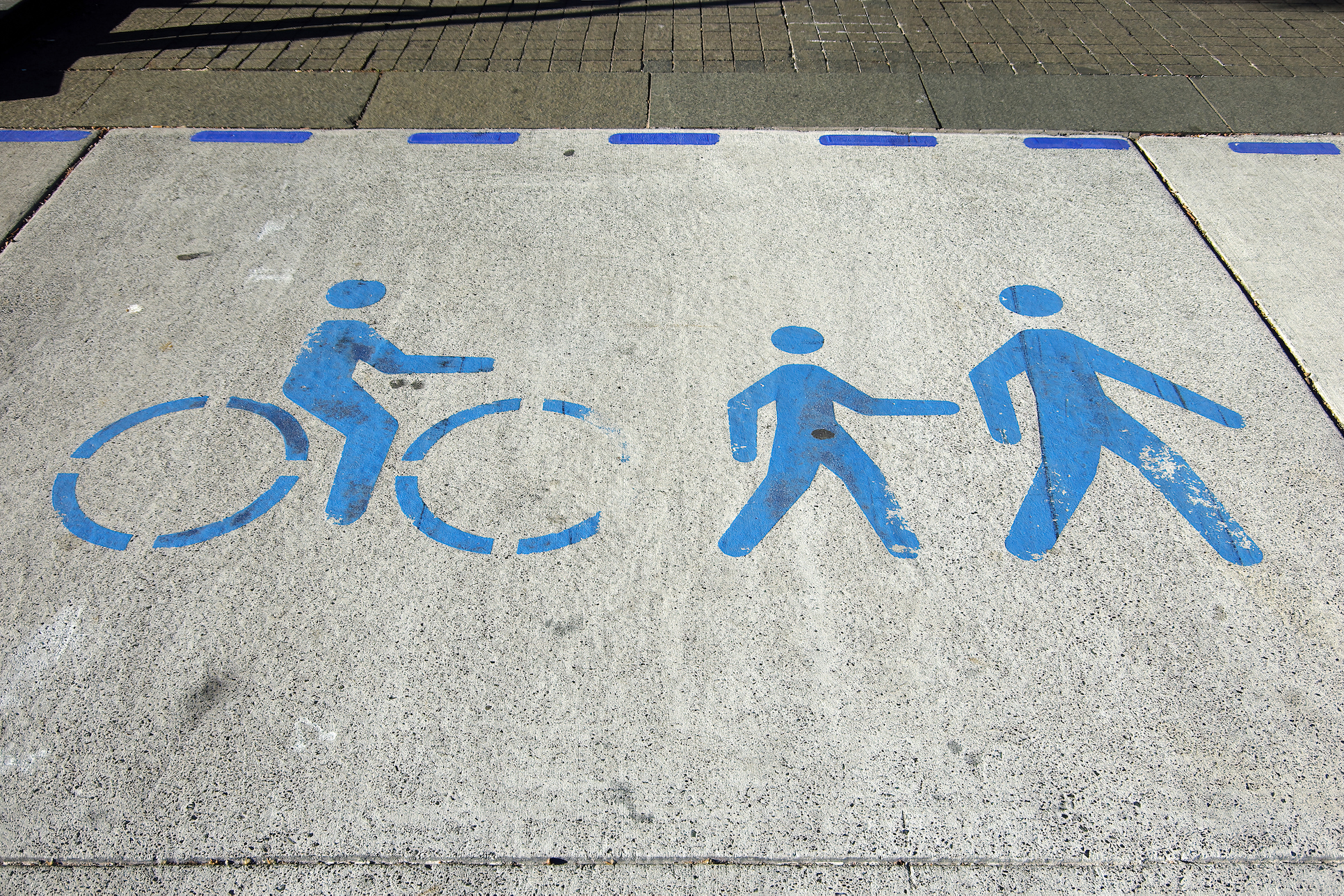
Australian cities failing on walkability

The World Heath Organization has set targets to promote physical activity but an international study shows Australian cities are built around cars rather than encouraging walking
Published 5 July 2022
More than half of Australian adults don’t do enough physical activity – and our cities aren’t helping.
A healthy level of physical activity isn’t just about going to the gym or playing sport, it is about the built environment around us and how that makes it easier or harder to walk around.
Walking is an easy, popular, equitable, and accessible way to achieve World Health Organization (WHO) recommendations that we each do 150 minutes per week of moderate-intensity physical activity.

But large parts of Australian cities aren’t pedestrian-friendly. Instead, our urban planning is car-centric, creating barriers to healthy, active and sustainable lifestyles.
I’m part of an international team of researchers, led by Professor Billie Giles-Corti at RMIT University, that has developed indicators of healthy and sustainable city environments, which will help achieve the WHO’s 2030 target to reduce physical inactivity by 15 per cent – now published as a Lancet Global Health Series on urban design, transport and health.

Using data from the International Physical Activity and the Environment Network (IPEN) study, our research, led by Professor Ester Cerin from the Australian Catholic University, calculated that to get people walking enough to meet the WHO’s target, neighbourhoods need sufficiently dense populations to support nearby services like shops and public transport – at least 5,700 people per km².
Cities also need connected roads or paths for people to use – about 100 intersections per km², and readily accessible public transport – about 25 stops per km².
Pedestrian-friendly neighbourhoods are associated with reduced non-communicable disease risk and built environment characteristics like population density, street connectivity and access to public transport are important for neighbourhood walkability.
Our further research in The Lancet Global Health Series, led by Dr Geoff Boeing from the University of Southern California, then used these benchmarks to assess 25 major cities across 19 countries.
We found that all three Australian cities included in the study – Melbourne, Sydney and Adelaide – fell short against optimal thresholds for population density and street connectivity that support walking.

Only 51 per cent of Sydney’s population, 18 per cent of Melbourne’s, and none of Adelaide’s population live in neighbourhoods that meet the minimum threshold for population density. This reflects traditional Australian suburbia characterised by standalone, low-density housing.
As contrasting examples, 97 per cent of the population in Lisbon in Portugal and 96 per cent in Valencia in Spain, live in areas with adequate population density. The average for meeting density thresholds was much higher for cities in middle-income countries compared with high-income countries.

Health & Medicine
Exercise really is medicine
Australian cities also have low street connectivity.
Only 13 per cent of the population in Sydney and Adelaide, and 21 per cent in Melbourne live in neighbourhoods that meet the optimal threshold for connected streets to help achieve WHO’s physical activity target.
This is well below the average proportion of the population living in areas with adequate street connectivity, for both high-income and middle-income country cities in the study.
Cities with a high percentage of their populations meeting or exceeding optimal thresholds for intersection density include Lisbon, Portugal (99 per cent), Bern, Switzerland (98 per cent) and Hong Kong (92 per cent). Low street connectivity makes it less convenient to walk to daily living destinations like shops, parks and schools.
Relative to the other cities in this international study – neighbourhoods in Sydney, Melbourne and Adelaide have low walkability overall.
Similar to previous Australian studies, we also found that access to walkable neighbourhoods is inequitably distributed across these three Australian cities. While expensive inner-city areas have better walkability – many middle and outer suburban areas are highly car dependent.
Australian cities also have inadequate access to frequently running public transport, to support walking.
We found that only 49 per cent of Melbourne’s population are within a 500 metres walking distance of public transport that’s serviced at least every 20 minutes, compared with 54 per cent in Adelaide and 58 per cent in Sydney.
By contrast, in Sao Paulo, Brazil 94 per cent of the population have nearby access to frequent public transport.

Inadequate city planning policies may be contributing to our car-centric built environments.
As part of The Lancet Global Health Series, I led a study to assess and compare the presence and quality of policy frameworks across the 25 cities. We found that Australian cities – like many of the other cities studied – don’t have sufficiently ambitious, evidence-based policies to promote healthy, active and sustainable cities.
For example, despite all the rhetoric supporting health and sustainability in our cities, Adelaide and Sydney don’t have policy requirements for minimum street connectivity, and Melbourne and Sydney have state government housing density targets that are too low to support walkability.

Environment
Mapping climate policy
The Australian cities also lack measurable policy targets for providing pedestrian and cycling infrastructure, and Adelaide’s policy targets for walking and cycling participation are too low to optimise physical activity.
These policy limitations undermine efforts to increase physical activity through active transport, improve air quality and reduce greenhouse gas emissions.
To enhance health, Australian cities need evidence-informed, measurable and actionable city planning policies. Policies that are contrary to evidence need to be urgently revised and policy gaps must be filled.
Urban design and transport policies should include measurable targets that align with the optimal thresholds needed to achieve WHO’s physical activity targets. More research is also needed to establish optimal health-enhancing thresholds for other urban design and transport features to help guide policy development.
City planning policies and interventions also need to focus on reducing current inequities in access to walkable urban environments.

All levels of government need to work together, with the private and community sectors, to ensure integrated planning and delivery of the full suite of transport and urban design features needed for healthy and sustainable cities.
Policy makers could start by taking note of our Global Observatory of Healthy and Sustainable Cities – an international collaboration that shares the findings of The Lancet Global Health Series.

The Global Observatory hosts city reports and scorecards for all 25 cities in the study – including Melbourne, Adelaide and Sydney. These can be used to guide city planning to better support population health and achieve WHO’s physical activity targets. And more scorecards are planned.
The Global Observatory’s 1000 Cities Challenge invites interested researchers and policymakers to get involved in calculating indicators for their own city.
This research was led by the executive team of the Global Healthy and Sustainable City-Indicators Collaboration: Professor Billie Giles-Corti (RMIT University), Dr Melanie Lowe (University of Melbourne, Dr Geoff Boeing (University of Southern California), Professor Ester Cerin (Australian Catholic University, Dr Deborah Salvo (Washington University), Professor Erica Hinckson (Auckland University of Technology), Professor Jim Sallis (Australian Catholic University), Carl Higgs (RMIT University), Dr Deepti Adlakha (North Carolina State University), Professor Anne Vernez Moudon (University of Washington), Dr Jonathan Arundel (RMIT University), Dr Shiqin Lui (Northeastern University). Other contributors from the University of Melbourne include Professor Mark Stevenson and Thanh Ho.
Banner: Getty Images



